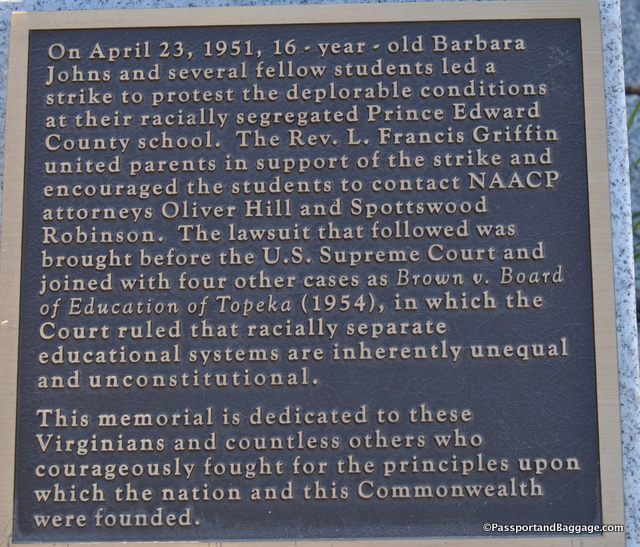Capitol Park
Richmond, VA
March 2017
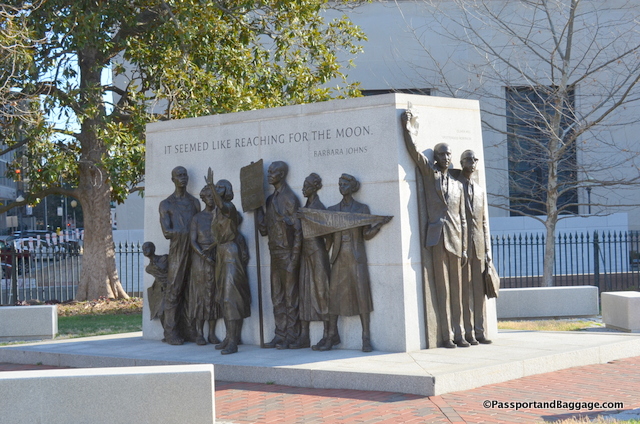
The Virginia Civil Rights Memorial sits on the grounds of Capitol Square in Richmond VA and commemorates the protests which helped bring about school desegregation in the state.
Unveiled in 2008 this $2.8 memorial was designed by Stanley Bleifield.
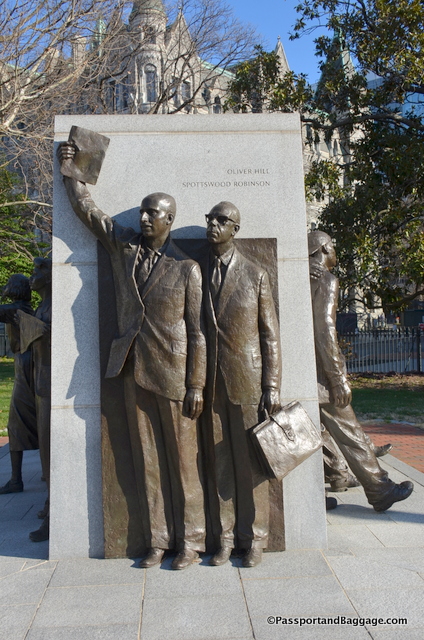
Oliver Hill and Spottswood Robinson
From the Richmond Times-Dispatch: “A Commonwealth once synonymous with defiance of court-ordered school integration celebrated the latest symbol of its often-difficult embrace of equality with the Virginia Civil Rights Memorial in 2008.
It represents a key moment in the history of the civil-rights movement in Virginia.
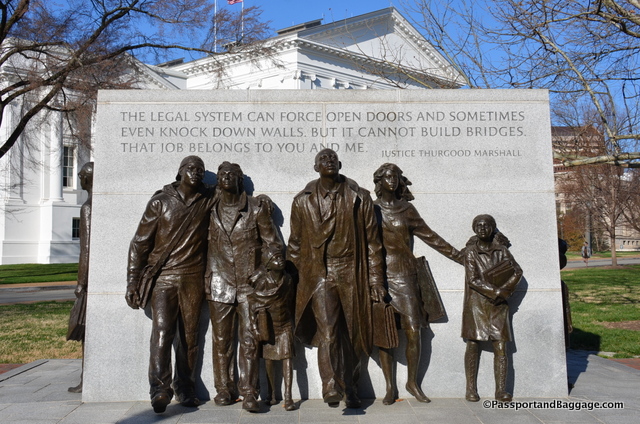 The statue spotlights the African-American students in rural Prince Edward County whose 1951 walkout to protest their run-down school led to a lawsuit that was folded into the challenge that triggered the 1954 Brown vs. the Board of Education decision by the U.S. Supreme Court banning segregated public schools.
The statue spotlights the African-American students in rural Prince Edward County whose 1951 walkout to protest their run-down school led to a lawsuit that was folded into the challenge that triggered the 1954 Brown vs. the Board of Education decision by the U.S. Supreme Court banning segregated public schools.
Among the figures in the memorial is Oliver W. Hill Sr. holding a rumpled legal brief aloft as he stands shoulder to shoulder with law partner Spottswood W. Robinson III. They took on the case of the Prince Edward County students who protested the shabby condition of their school.
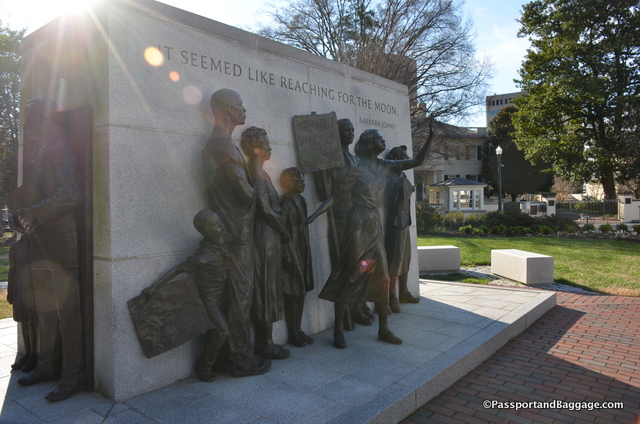 Barbara Johns was the one who called the school strike in 1951 and she is a key figure in the sculpture. Her statement “it seemed like reaching for the moon” is boldly featured.
Barbara Johns was the one who called the school strike in 1951 and she is a key figure in the sculpture. Her statement “it seemed like reaching for the moon” is boldly featured.
The student protests garnered support from the local community, benefiting from the moral leadership of the Rev. L. Francis Griffin, known as the “Fighting Preacher” and is also featured in the memorial.”
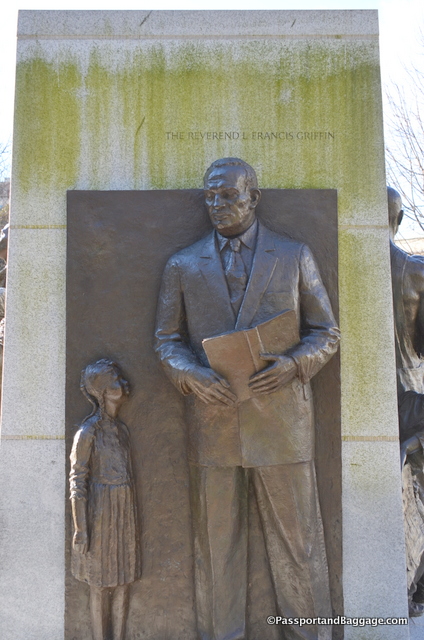
The Reverend Francis Griffin
The article seemed, in my opinion, to gloss over some of the reasons for the strike, here is a very, very short elaboration of the situation. R.R. Moton High School, an all-black high school in Farmville, Virginia, founded in 1923, suffered from terrible conditions due to underfunding. The school did not have a gymnasium, cafeteria or teachers’ restrooms. Teachers and students did not have desks or blackboards, and due to overcrowding, some students had to take classes in an immobilized, decrepit school bus parked outside the main school building. The school’s requests for additional funds were denied by the all-white school board.
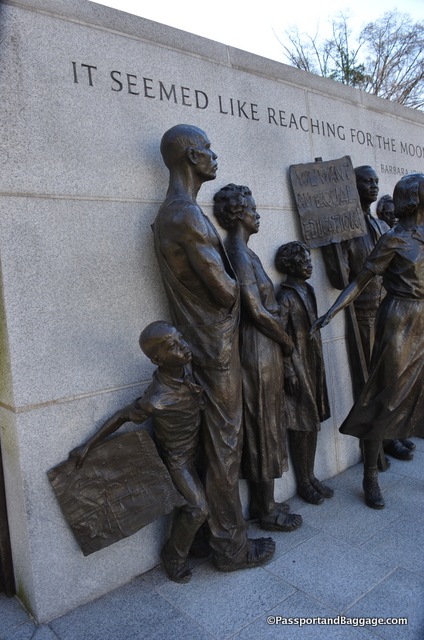 American Sculptor Stanley Bleifeld (1924 – 2011) was born in Brooklyn, New York, Bleifeld’s many awards included: Sculptor of the Year in Pietrasanta and the World, in 2004, the Henry Hering Memorial Medal of the National Sculpture Society, (he was president of the Society from 1991 to 1993), the Medal of Liberty from the American Civil Liberties Union, the Shikler Award from National Academy of Design, and many others.
American Sculptor Stanley Bleifeld (1924 – 2011) was born in Brooklyn, New York, Bleifeld’s many awards included: Sculptor of the Year in Pietrasanta and the World, in 2004, the Henry Hering Memorial Medal of the National Sculpture Society, (he was president of the Society from 1991 to 1993), the Medal of Liberty from the American Civil Liberties Union, the Shikler Award from National Academy of Design, and many others.
He was a National Academician in Sculpture, and was an active member of the National Academy of Design, helping to set policy for the organization.
Regular readers of this blog will recognize one of his statues in San Francisco, The Lone Sailor
